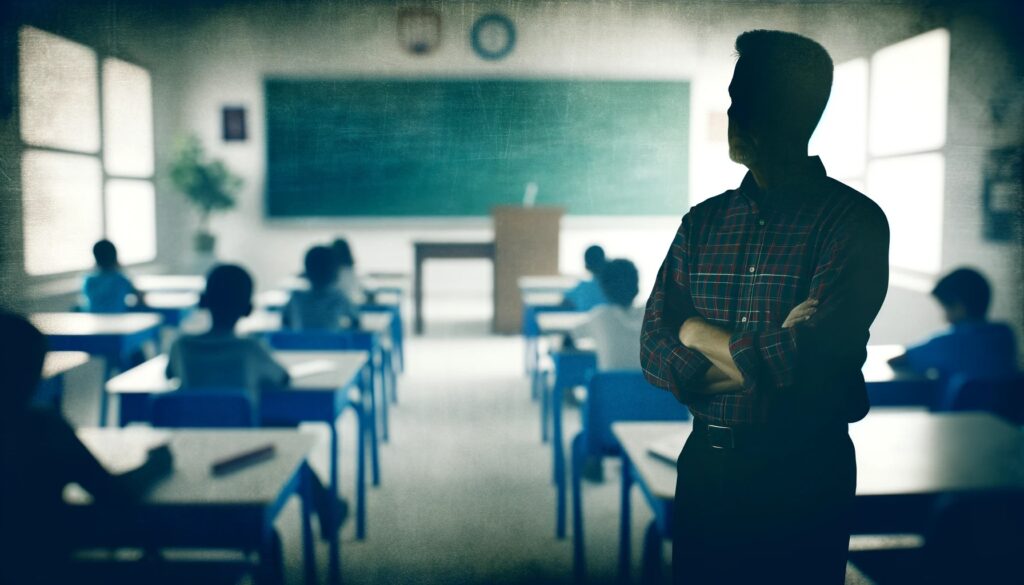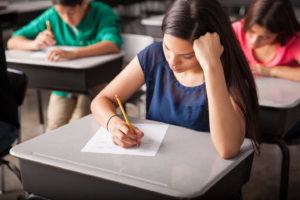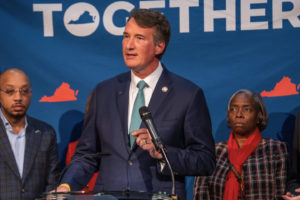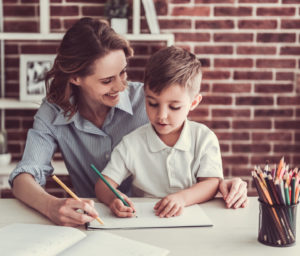Op-ed: Our children deserve better than so-called ‘public education,’ which has no legal responsibility to educate anyone
I’ll never forget a recent Facebook post from a mom whose child was struggling in public school. Even though her daughter had an individual education plan (IEP), the school wasn’t meeting her…

I’ll never forget a recent Facebook post from a mom whose child was struggling in public school. Even though her daughter had an individual education plan (IEP), the school wasn’t meeting her specific needs, this mom said.
“Is homeschooling an option?” I asked her.
Her answer stunned me. She wished she could homeschool but couldn’t “afford” it, she wrote.
Since the introduction of U.S. public education, one of the most popular arguments in its favor is its supposed ability to make education affordable to everyone.
How can we as taxpayers continue to fund this multibillion-dollar industry without requiring it to meet its objective: successfully raising the next generation?
Schools in ‘fiscal crisis’
The COVID-19 pandemic exposed what education experts had been warning for decades: the steep decline of student learning, as evidenced by test scores over 15 years.
“It’s important to see the recent scores as just one more downward step in a decline that’s been going on since at least 2009,” wrote author Natalie Wexler in a Forbes op-ed. “If you see them as a sharp break from a previous record of steady progress, as news reports have suggested, you’re liable to think the solution is for schools to double down on what they were doing before the pandemic. …
“But if you realize that what we were doing before wasn’t actually working, at least for low-scoring students, that should lead you to believe we need to change something more fundamental – like what we are teaching and how.”
Have public schools changed anything fundamental in their teaching approaches? Not at all.
Instead, the pandemic became an excuse to funnel “windfalls in federal subsidies,” many of which were misappropriated on anything but COVID-related expenses.
In one flagrant example, school districts in Tennessee misused recovery funding for “items such as mattress pads, instant pots, toaster ovens, Apple pens, security cameras, sound systems, and sending teachers to a conference in Baltimore.”
But now reality has crashed onto school districts nationwide with record-high inflation.
“COVID relief artificially boosted the budget,” said Dighton-Rehoboth Superintendent of Schools Bill Runey in Massachusetts, calling the current situation a “fiscal crisis.”
Some reasons for public-school inefficiencies lie in its institutional nature, which COVID-era subsidies intensified.
“As federal funds augmented budgets, inflationary costs continued to skyrocket from insurance to electricity, food, supplies and other expenses,” the Center Square reported.
This happened even as student enrollment fell, which means taxpayers were paying more to teach fewer students.
To combat budget shortfalls, schools are laying off more teachers – further affecting special-needs students like the child whose mom posted on Facebook.
Public schools have ‘no legal responsibility’ to educate
Such massive taxpayer windfalls might be justified if we saw a demonstrable improvement in student learning. But students are still underperforming academically compared to pre-pandemic scores.
In just one example, New Jersey schools recently reported only 51% of students demonstrated proficiency in English language arts, compared to 58% four years ago.
Math proficiency also fell to 38.2%, compared to 44.5%.
The numbers grow even more dismal when considering the state’s per-pupil funding is more than $18,000 – higher than the average private school tuition, which is less than $16,000.
How have public schools been able to get away with this? The answer lies in the legal system, which even liberal institutions such as the Brookings Institute acknowledge.
“The K-12 education system has been nearly immune from claims of malpractice,” Mark Dynarski wrote in 2018.
He quoted from an academic paper, “A Crack in the Educational Malpractice Wall,” written by professors Terri A. DeMitchell and Todd A. DeMitchell:
“While educators can be held liable for infringing on students’ rights and for negligence that causes students physical harm, educators do not have a legal responsibility to educate students.”
Consider that for a minute. Public schools have no legal responsibility to educate your child?
Even Dynarski dryly notes how parents may feel concerning this:
“That districts and their schools do not have a legal responsibility to educate students might come as a surprise to parents and taxpayers who gave K-12 public schools $634 billion a year as recently as 2014, a sum of money that might lead them to believe that the responsibility to educate students is at least implicit if not obvious.”
Fast forward to 2024. Nothing much has changed, except we now give K-12 public schools even more money to do … what?
Good news: Alternatives do exist
Fortunately for parents, enough people have stood up to this outrage by simply opting out of the system.
One educational alternative, homeschooling, works out demonstrably cheaper than public school.
The average per-pupil funding to homeschool one child varies between $700-$1,800, according to recent estimates – saving taxpayers an estimated $24 billion each year.
Does this significantly economical form of education help students master proficiency in basic life skills such as reading, writing, and math?
Yes, according to research showing home-educated children generally score 15-25 percentile points above their public-school peers on academic achievement tests.
Homeschooling’s success lies in its ability to provide customized learning strategies tailored to each child.
Amy Mackin saw this firsthand when she withdrew her son from public school to homeschool him.
“Thirteen years ago, my neurodivergent child’s experience with public special education led us to leave it altogether and homeschool from grades 6-12,” she wrote in the left-of-center educational magazine, ChalkBeat.
“I created a customized education program for my son, incorporating his ideas and interests. I connected with educators who operated enrichment centers offering homeschool classes in the morning and after-school programs later in the day, as well as community college staff, local museum educators, retired teachers, homeschool groups, and university professors who offered additional opportunities for alternative learning.”
Mackin readily admits homeschooling her special-needs son required financial sacrifices for her family.
“It wouldn’t have been possible if I didn’t have a spouse with a full-time job and health care benefits — putting this option out of reach for many, if not most, families,” she wrote.
However, Mackin also holds out hope for finding innovative ways to give all students the help they need to thrive academically.
“The types of partnerships I developed could help fill the gap that exists between what schools can reasonably offer and the expansive services children – especially those with disabilities – need to thrive, without asking parents to become full-time, unpaid instructors and curriculum designers,” she wrote.
Such success stories only come from parents willing to explore strategies outside public school as the institution shows no eagerness or effort to change from within.
Unless we hold public schools to a stricter standard of legal responsibility, we’ll continue to see the same predictable patterns of failure to educate – with our nation’s children paying the price.



